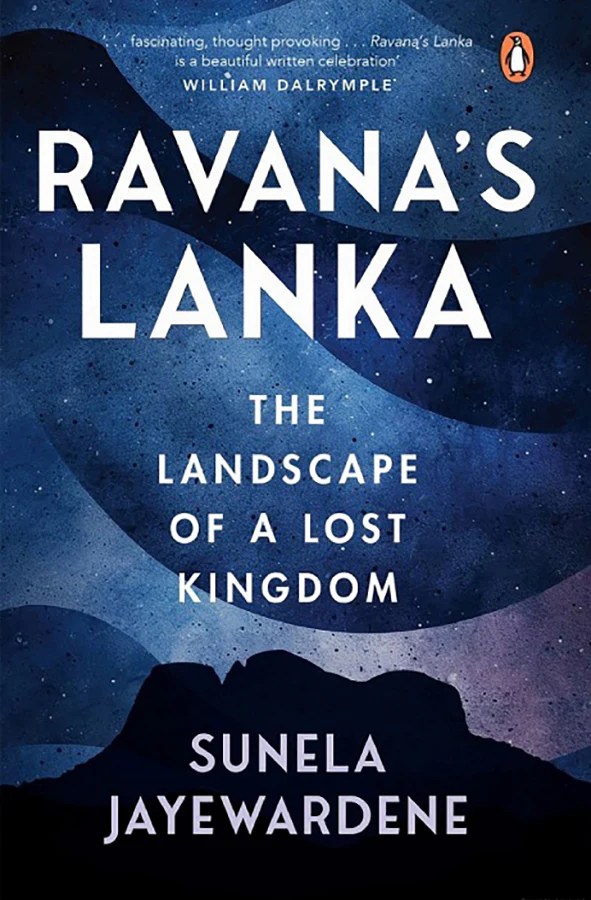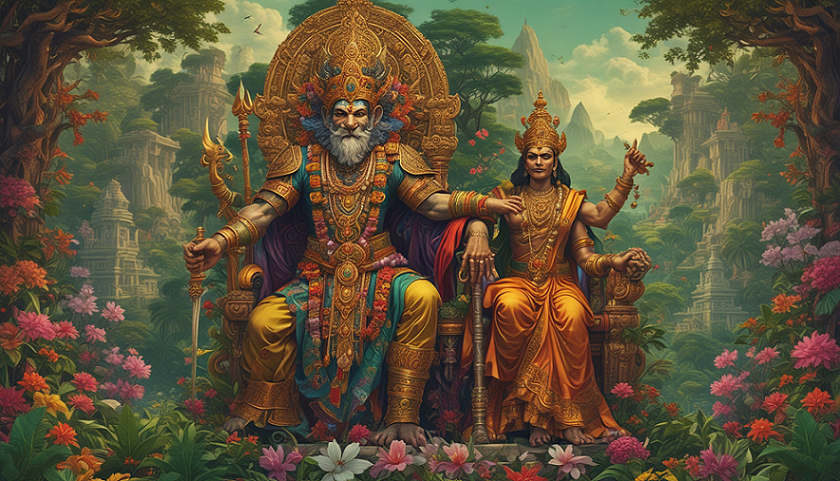By Tyron Devotta
Sunela Jayawardene is on a mission to demonstrate that origins of Sri Lanka goes well beyond Vijaya's landing, and it is an important factor in establishing the island's anthropological roots.
Exploring the Myth
An author of forgotten history, Sunela is an intrepid hodophile who writes not from the seat of her pants, but from the soles of her feet, given that she calls herself a “wandering wanderer.” Looking beyond the lens of the Ramayana and the epic conflict between the armies of Ravana and Rama, Sunela’s book "Ravana’s Lanka" is more than just an information dump. It is a meticulously crafted work, filled with beautiful prose and engaging descriptions that create vivid mental images. The writer is a highly skilled storyteller who can transport readers to alternate realities, encouraging them to examine various pieces of information embedded in a well put together credible narrative; all the while encouraging us to believe that even though something is prehistoric it does not mean it didn’t exist!
In proving her point, she challenges the western tradition of producing the written word as physical evidence to verify claims of ancient civilizations. She implies that we need not be embarrassed by oral histories and the long practised method of preserving it through epics!
From folklore and myths, to poems and rituals, Sunela’s Ravana lives on. As she writes, he must have lived in his citadel of Lankapura, as all the nations of the region recall. But due to a lack of academic application in Sri Lanka, the kingdom of the Yakas, and the depth of civilization it achieved, along with Ravana’s origin and his legendary power are still open to debate. Sunela is critical of the archaeologists who don’t investigate historic evidence that predates Vijay.

Apart from Ravana’s origin, the book is also about visiting places the writer has researched through the written word and oral tradition. This means the reader gets the opportunity to follow her through valleys, climb up narrow steep paths through forest slopes as the dew and the drizzle dampens the terrain with every breeze. She battles with dead treasure hunters who have destroyed evidence, in her attempt to piece together puzzles in the form of inscriptions on the walls of hidden caves in the Ruhuna kingdom, or wade through waist high shrubs that could hide all but an elephant. In true Indiana Jones style she proves archaeology is not the pursuit of the faint heart.
Challenging Conventional Narratives
In her case study of Raksagala (now known as Rajagala) which lies 193 km south east of Mihintale, she carefully constructs a theory that this ruined city was built on the indigenous knowledge of the Rakusa and was used as the foundation upon which the Yaka technology found purchase.
Sri Lankans may grasp her perspective, but a newcomer to this narrative might react with indifference, asking, "So what?" To provide some context, the term "Yaka" (or "Yakseya" යක්ෂයා/යකා) which has its roots in Sinhalese folklore, directly translates to the word "demon." The word "Rakusa" refers to a related being that is equally feared. From a rational standpoint, neither of these entities is someone you'd want to associate with. I've even heard some Sri Lankans say that encountering a Rakusa could result in the high likelihood of it feasting on your flesh and drinking your blood.
Sri Lanka’s Lost Civilizations
However, Sunela Jayawardene has a different take on these early people of Sri Lanka. She says the Yaka, Rakusa and Naga people may have been physically dissimilar as West Africans or Europeans, but they may also have been physically similar as Sinhalese, Muslims and Tamil communities of modern Sri Lanka. However, she says the world sees them differently. While Sunela’s picture paints Ravana as a great, intelligent king who lived in ancient Lanka, the world sees him as a demon — an impression that is hard to shake. In fact, when AI was asked to generate an illustration of Ravana, the Lankan King, the image that came out looked only partly human, depicting him with feet of an animal. The story of Rama and Ravana’s epic battle and the heinous deeds associated with Ravana like the kidnapping of Sita, Rama’s wife, is a narrative that is deep rooted in the written down knowledge systems of this world. The Diwali festival, which is celebrated every year, and often called the Festival of Lights commemorates the victorious return of Rama to Ayodhya after saving his wife Sita from King Ravana. This festival is always positioned as the remembrance of an event which triumphed good over evil and light over darkness.
Back home, Sunela Jayawardene, who has taken early retirement from her job as an architect, is engrossed in the search for Ravana and his mighty and glorious kingdom. She examines the roots of Sri Lanka’s indigenous races who are very much a part of it. Sunela writes, “As I travel, I listen to the stories of my people. From sleek, corporate meeting rooms to funky coffee shops frequented by the glitterati, from dusty doorsteps to wind-blown tussocks, I have stopped and sat round-eyed, by the bias of orthodox history or by the simple authenticity of a village tale.”
Unveiling Hidden Histories
Sunela says she was seduced by the growing possibility of a yet undeclared civilisation, more ancient than what is presently known and curious about the hints of technological advancements that, in some facets may have super-seeded what exist today, she had begun reappraising the land that was her home. Exploring the geographical realities of scattered legends, folklore, poems and even idioms in the two ancient languages of Lanka, Sinhalese and Tamil, to assemble a single narrative of a lost kingdom.
One could feel that she is almost obsessed with this great king of the past and taken up living on the edge of a jungle lake called Dunvila, which lies in a plain between the lowest tiers of the mountains of Dumbara and the mighty Mahaweli river to the East. The long plain, wedged like a trough between the mountains and the river, channels the water that seeps through the monsoon forests of the mountain slopes, down to the river, through creeks, lakes and clever channels built almost 2000 years ago. Laid out along the base of the mountains and linked by the 300 CE Minipé canal is a collection of lakes that lie blinking in the Dry Zone sun. Silvery, like a tear-filled eye, fringed with long lashes of monsoon forests, Dunvila is the last restored irrigation lake of the canal. To the south and west of our lake, dark forests rise and fall with the mountain contours, rippling over the ridges like waves in a surging sea,” Sunela says in the chapter ‘Death of a King.’
Living at the foot of mountain
The writer says, each morning she wakes up to a panorama of range upon, rolling range of mountains draped in mist. Here, she says, are the valleys and secret plateaus that had once been home to the Mayurangas (Ravana’s lineage), now known as the Knuckles range. “There, the mountain valleys and villages make the air thick with secrets. And it is there that Karu (Sunela’s husband) and I sat in the cool mountain breeze and first heard tales that brought the mythical King Ravana to life. It is with these mountain people, who live in the high valleys and on the rocky scarps of Dumbara, that the flame of the legend of Ravana burns brightest.”
A Lifelong Quest
Sunela’s journey spans three generations, beginning when she was a toddler, listening to tales about the Great King. In the 1990s, she took her two young daughters along on her archaeological explorations, and now, as a grandmother, her quest continues unabated. Unravelling the mysterious origins of Ravana and intertwining them with the history of the island nation is undoubtedly a challenging endeavour, but she remains undeterred, promising that more stories will emerge along the way.




